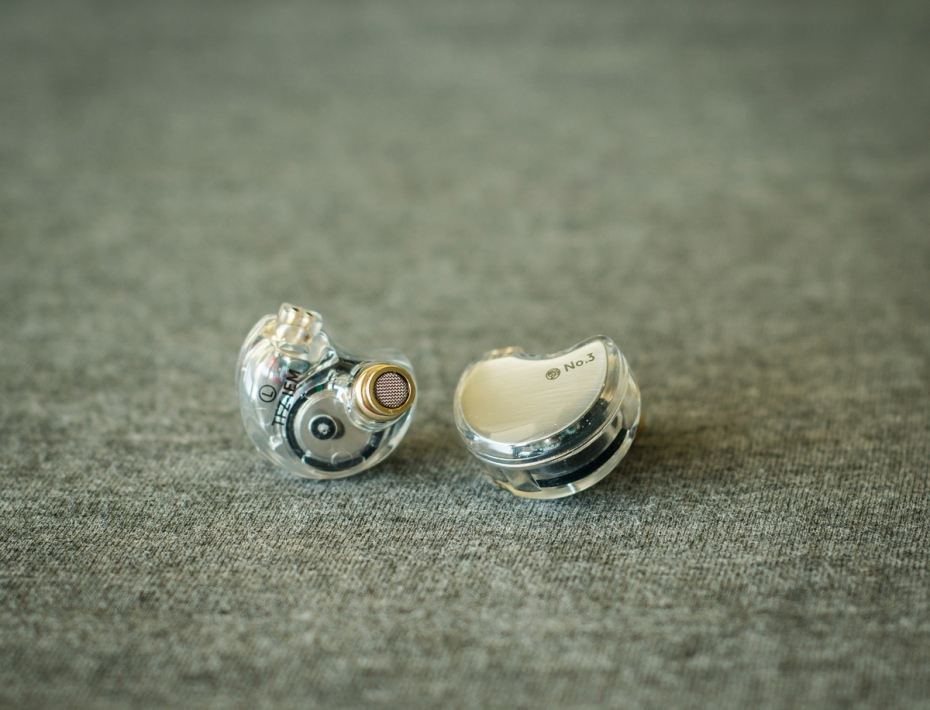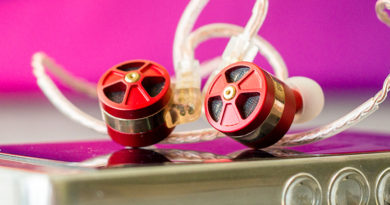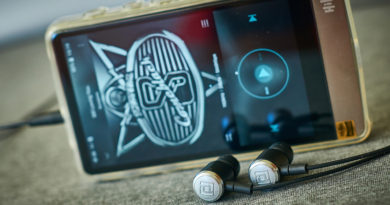TFZ No.3 — bassy and warm single dynamic IEMs


Another take on TFZ (The Fragrant Zither) brand and their single dynamic driver IEMs — No.3. Last time I have been dealing with TFZ King Exclusive Upgraded dynamic IEMs and was quite impressed with the clarity of treble and amount of lows a single driver of this type can reproduce. Let’s see how this model would do…

Prior to start, we would like to share some of TFZ brand (which stands for The Fragrant Zither) background. This brand was found in year 2015 by a group of audio enthusiasts whose idea was the product personalization and precise niche targeting. Since that time, TFZ has managed to release more than 15 products and their subsequent versions in IEMs and overheads categories, whereas sales of some of those are measured in thousands (like KING, for example). Currently, TFZ is not only selling in more than 30 countries, but also cooperating closely with professional musicians and music bands which derives the further experience for this brand in audio equipment design and tuning. Furthermore, TFZ won Japanese VGP award twice (you can find the record about that on VGP website). This award is given for the best innovations, market developement or most popular products.
Consequently, we would consider TFZ brand as already matured that automatically shift our expectation a bit higher.

You can buy TFZ No.3 at PenonAudio store
TFZ No.3 technical specifications:
- Driver: 11.4mm double cavity & voice coils, tesla magnetic group
- Magnet material: NdFeB N50
- Diaphragm: diamond diaphragm
- Frequency response range: 5Hz-40kHz
- Impedance: 20Ω
- Sensitivity: 108dB
- Cable connectors: 2pin, 0.78mm
- Cable: 1.2m, silver-plated cable, 3.5mm jack
Packaging, design and build:
TFZ No.3 comes in tall white box with brand logo, name and contact data imprints which is a standard for TFZ packaging.

IEMs are held in place by the soft top insert, cable and additional accessories are located in separate smaller boxes.

Box contents:
- TFZ No.3 IEMs
- audio cable with 3.5mm jack and 2pin, 0.78mm connectors
- 7 pairs of silicone eartips
- cable clip
- soft protective pouch
- short user manual

Absolutely love the look of No.3 IEMs… Transparent plastic body exposing the hardware part was always more attractive for me than anything else. I would not trade that even for stainless steel as long as the sound would not be improved.

Presence of metallic layer with surface grinding and model name under the top cover is another good design element that makes transparent case less vulgar Anyway, driver and its veins are still exposed through the transparent inner side.

Shells are made of two parts but you would hardly see the joint and there is no gap whatsoever. I’ve also been able to find two tiny compensational openings per each channel. One is located above the central part of the driver and another one is shifted to the top edge.

Sound output nozzles are made of aluminum, covered with aluminum mesh and look as if held by thread. No chance to screw it out cause it is glued at place (pity, isn’t it?).

Channel indicators are printed on the inner parts of the shells.

2pin connector bases are stiff, don’t have any free play and stand out from the shells. Сorresponding cable connectors fit nicely, thanks to the special sockets in their housings. This design works better than having flat connector bases and provides better protection from the side load.

Stock cable features very thick semi-transparent braid, silver-plated cores, sringy earguides, aluminum jack, Y-splitter and length limiter housings and connectors made of transparent plastic. Mic effect is not an obvious issue here.

Fit:
Natural shape, low weight, fairly thin profile and good earguides provide quite comfortable fit with the moderate level of outer noise isolation. Fit might be even better with less resilient earguides that tend to pull IEMs up but this is easy to improve by heating earguides and giving it more comfortable shape.
Sound quality:
Tested with HiBY R6Pro & Hidizs AP80 DAPs

Lows and midbass:
Lows are undoubtely the most developed and accented range of TFZ No.3 IEMs. Bass reach is deep, extension is quite impressive. It is not too fast but not too slow either to sound detached. Despite quite big amount of presence the resolution and textring are only moderate — bass is kind of diffused, bleeding and might overshadow other ranges. Such bass behavior clearly influences the overall tonality and makes IEMs sound fairly warm and dark. Bassheads would appreciate
Midbass is decent — powerful, tight and full bodied. Same moderate speed of lows does affect drum articulation and dynamics but it doesn’t make drum sound less engaging. Warmth and thickness created by the bass influence and secondary role of the treble result in rare but interesting drum reproduction with the emphasis on volumetric parameters of soundstage.

Mids and vocals:
Mids have been tuned to sound stirking and emotional by elevating upper mid range and lowering the opposite range. Consequently, male vocals sound a bit thin and distant whereas female vocals are brought to front, better exposed and feel more appealing. This sometimes leads to a bit of shouting and harsh peaks with female singers that would greatly depend of the quality of recording and audio source tonality. Apart from that, midrange is quite warm and show good resolution for a dynamic driver. Most of the instruments have enough room and defined boundaries and would not tend to mix. I would prefer upper mids to be less agressive and vivid to call those IEMs trully warm.

Treble:
In contrary to TFZ KING series, treble is the least present and accented range here. Feels to be located behind both — lows and mids, also influenced by the lower end and sometimes even gets overshadowed in the most bass-heavy tracks. Teble and especially its lower range is enough here to supplement and enrich the sound but not quite enough to add the exceptional clarity or transparency in order to neutralize the emphasis of bass. Therefore, treble extension and presence are moderate and might require to play with different eartips for those who like more crispness or brigtness (silicone eartips would sound righter than foamy ones). TFZ No.3 are definitely made as an opposing and warm sound towards bright KING series.

Soundstage:
Scene width and depth are more than average due to deep and volumetric lows, good instrument separation in mids and exposed female vocals. It might been even larger if treble had more gain but this would also change the entire tonality and make No.3 IEMs less distinguashable from the rest of the gang.

Sound in overall:
TFZ No.3 sound can be described as fairly warm and dark, with the emphasis on lower end, decent midbass, resolving, emotional and appealing mids and recessed treble. Mostly suitable for slow music genres like blues, soul, lounge, jazz, etc.
Compared to Tanchjim DarkSide:

Tanchjim DarkSide is very good and close rival in terms of sound quality and tonality. Similarly warm and dark, those IEMs also stand aside from various indistinguashable bright tonality models. The main difference with TFZ is better texturing of lows and better presence of treble. At the same time, mids are similarly skewed towards female vocals, bass is not that deep and fit is worse. So, I would recommend TFZ No.3 for bassheads and Tenchjim DarkSide for more universal listening.

Conclusion:
Despite some sound tweaks that might apply to upper mids portion, I consider TFZ No.3 as a good choice for audio fans who prefer the sound of dynamic drivers over any other technology. Along with great deep bass reach, decent midbass, wide stage and emotional mids, these IEMs possess quite unique warm and dark sound signature which is very rare nowadays. Most of the models from other brands in this price range would be sounding more similar to each other and tend mostly towards the brighter tonality. Good that TFZ wasn’t afraid to create something different and brought us this option. Therefore, whoever thought of bassy and warmer sound of comfortable dynamic IEMs should put an eye on this choice.
You can buy TFZ No.3 at PenonAudio store




